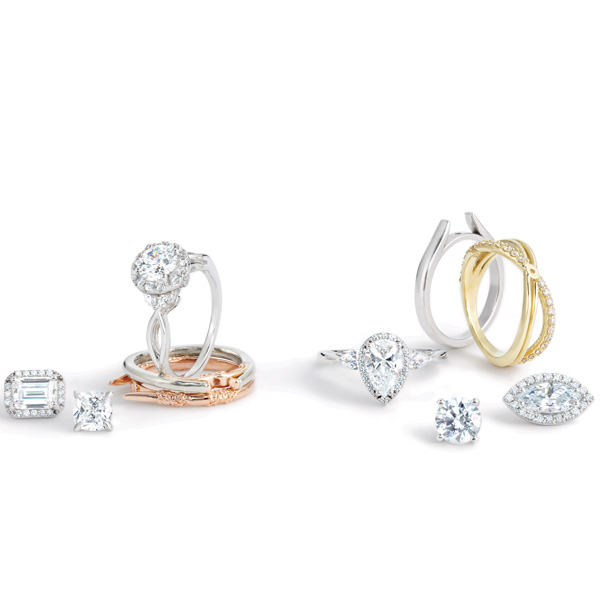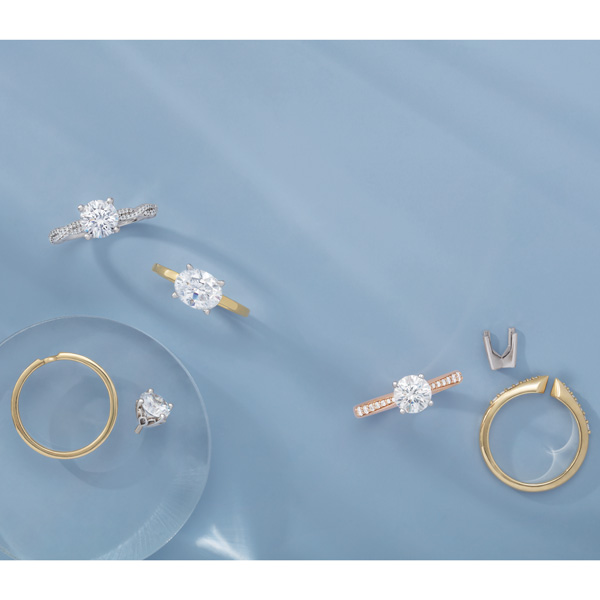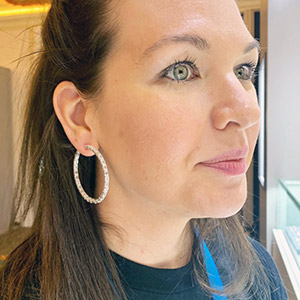
When you hear the term platinum crown, you might think we’re talking about something exquisite worn by royalty.
We aren’t talking tiaras and diadems, but if you ask Kevin Reilly, senior vice president of of Platinum Guild International (PGI), the subject seems just as important.
An engagement ring is as important as the royal jewels to most who wear them, and that’s precisely where you’ll find a platinum crown, if one opts to use one. A platinum setting that secures a center stone in its prongs, this finding sits atop a ring—of any metal type—and can also be found in other categories of jewelry too.
Most consumers concern themselves with the aesthetics of their engagement ring (understandably so), but not always with the practicality, or the safety of it. But, according to PGI, the durable option offers more protection for a center stone than other metals, and in the process will help diamonds shine bright without the need for replating or other future maintenance.

Below, more clarity on platinum crowns with Kevin Reilly, in anticipation of what retailers might need to know—and share with their customers—about this option.
Does a platinum crown work for all types and shapes of gemstones?
Yes. When properly engineered to accommodate the gemstone’s shape, a platinum crown is always the best choice to secure it.
What about an engagement ring with a low setting—like a gypsy ring. Would this still be a possibility?
A traditional platinum crown (prong setting) wouldn’t be used in a ring where gemstones are flush set. However, because of platinum’s durability and the fact that metal is not lost as a result of normal wear, those gemstones are still most secure when set in platinum.
If a consumer wants a piece in white gold but opts for a platinum crown, would the aesthetic difference between the metals be obvious?
No. White gold appears to be white because it is coated with rhodium (a platinum group metal). Because platinum is naturally white and will never fade or change color over time, it will not draw color into or detract from the brilliance of the gemstone it holds. A difference in color would become obvious if the plating has worn away from the white gold portion of the ring. If someone prefers a white metal, platinum is their best choice.
What about shoppers on a budget—how big of a price difference are we looking at, roughly, for platinum versus gold prongs?
The average retail price of a platinum crown is approximately $350. In a recent survey, consumers were asked if they would be willing to pay extra to secure their diamond in a platinum crown. More than 90% of them said yes and when asked how much more they’d pay, they said an additional $469 (on average). In the long run, a properly engineered platinum crown gives a budget-conscious consumer the best value for their money since it will require little to no maintenance over time. Gold prongs, especially white gold will have to be replated multiple times and will likely need to be re-tipped or perhaps even replaced. Once these maintenance costs are factored in, a platinum crown is the most budget-friendly choice in the long run.
Would this be a viable option in jewelry other than just engagement rings, and how about pieces with more than one setting, like a tennis bracelet?
Regardless of the type of jewelry, if gemstones are being set in precious metal, platinum is always the best choice for setting those gemstones. In the case of a tennis bracelet, it’s even more important to choose platinum since there are a lot of gemstones that need to be secured.
Top: A selection of engagement rings in varying metals pictured with platinum crowns (photos courtesy of Stuller)
Follow JCK on Instagram: @jckmagazineFollow JCK on Twitter: @jckmagazine
Follow JCK on Facebook: @jckmagazine






